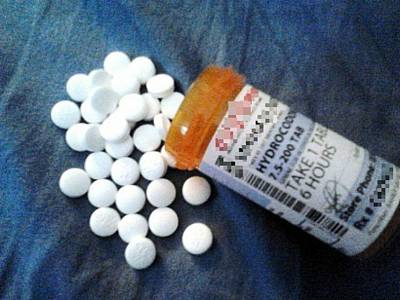
Overall decline in opioid-involved drug overdose deaths – but more deaths from synthetic opioids other than methadone
Overall overdose death rates decreased by 4.1% from 2017 to 2018 in the United States. New CDC data show death rates involving heroin decreased by 4%, and prescription opioid-involved overdose death rates decreased by 13.5%.
“Decreases in overdose deaths involving prescription opioids and heroin reflect the effectiveness of public health efforts to protect Americans and their families,” said CDC Director Robert R. Redfield, M.D. “While we continue work to improve those outcomes, we are also addressing the increase in overdose deaths involving synthetic opioids. We must bring this epidemic to an end.”
While progress has been made to combat overdose deaths, death rates involving synthetic opioids (excluding methadone) increased by 10% from 2017 to 2018.
The findings come from an in-depth Centers for Disease Control and Prevention (CDC) analysis of the latest available drug overdose death data. The report published online today in CDC’s Morbidity and Mortality Weekly Report (MMWR) analyzes changes in age-adjusted overdose death rates from 2017 to 2018 by demographic characteristics, county urbanization levels, U.S. Census region, and state. More than 750,000 Americans died from drug overdoses from 1999 to 2018.
“To sustain decreases and continue to prevent and respond to drug overdoses, specifically those involving synthetic opioids, it is critical to have a coordinated response,” said Debra Houry, M.D., M.P.H., director of CDC’s National Center for Injury Prevention and Control. “Medical personnel, emergency departments, public health and public safety officials, substance abuse treatment providers, community-based organizations, and members of the community all play a role in addressing this complex and fast-moving epidemic.”
Synthetic opioid overdose deaths increased in 2018
Opioids were involved in more than 46,000 drug overdose deaths in 2018. Of the 39 jurisdictions included in the analyses, 11 states and the District of Columbia saw decreased rates of death involving opioids overall.
Synthetic opioids were involved in 31,335 overdose deaths — nearly half of all drug overdose deaths in 2018. Illicitly manufactured fentanyl (IMF) likely drove the increase in deaths involving synthetic opioids (excluding methadone) from 2017 to 2018.
Synthetic opioid overdose-involved death rates increased from 2017 to 2018 among males and females, people age 25 years and older, non-Hispanic whites, non-Hispanic blacks, Hispanics, and non-Hispanic Asian/Pacific Islanders.
Death rates from synthetic opioids also increased in large central metro, large fringe metro, medium metro, and small metro counties. The latest available data show synthetic opioid-involved overdose death rates increased in 10 states. The four states with the highest increases were Arizona, California, Washington, and Missouri. The rates increased in the Northeast, South, and West but remained stable in the Midwest.
“Opioid overdoses decreased from 2017 to 2018 but still remain high. Efforts must be strengthened to maintain and accelerate decreases in deaths involving prescription opioids and heroin and to prevent continued increases in overdose deaths involving synthetic opioids,” said Nana Wilson, Ph.D., epidemiologist at CDC and lead author of this MMWR study.
The drug overdose crisis has evolved from 2017 to 2018
Preliminary successes in addressing the drug overdose crisis occurred during 2018. From 2017 to 2018, decreases occurred in all drug overdose deaths and in deaths involving all opioids, prescription opioids, and heroin. Efforts to improve opioid prescribing practices have increased and may have contributed to decreases in prescription opioid-involved overdose deaths.
Today’s findings suggest that factors that may be contributing to the decrease in heroin-involved deaths include reductions in the number of people initiating heroin use; shifts from a heroin-based market to a fentanyl-based market; increased treatment provision for people using heroin; and expansion of naloxone access.
Prescription opioid-involved overdose death rates decreased by 13.5% from 2017 to 2018. Rates decreased:
- Among males and females
- Among people age 15–64 years
- Among non-Hispanic whites, Hispanics, and non-Hispanic American Indian/Alaska Natives
- Across all urbanization levels
- In 17 states, prescription opioid-involved overdose death rates declined
- In the Midwest, South, and West, but remained stable in the Northeast
Heroin-involved overdose death rates decreased by 4.1% from 2017 to 2018. Reductions occurred among males and females, persons aged 15–34 years, and non-Hispanic whites, and in large central metro and large fringe metro areas. Among the findings:
- Rates remained stable in the Northeast and South, decreased in the Midwest, and increased in the West.
- Rates decreased in seven states and Washington, D.C., and increased in three states.
Opioid-involved overdose death rates decreased among females, persons aged 15-34 years, 45-54 years, and non-Hispanic whites, and in small metro and nonmetropolitan areas. Findings note:
- Rates increased among persons aged ≥65 years, non-Hispanic blacks, and Hispanics.
- Rates increased in the Northeast and the West and decreased in the Midwest and the South.
- Rates decreased in 11 states and Washington, D.C., and increased in three states.
CDC is putting data to action
CDC continues to work closely with other federal agencies to support the U.S. Department of Health and Human Services’ Five-point Strategy to prevent and respond to drug overdoses, specifically those involving opioids. The Strategy provides better treatment, better data, better research, increased access to naloxone, and better pain management. Within HHS, CDC conducts surveillance and research; builds state, local, and tribal capacity for prevention; supports providers, health systems, and payers; partners with public safety; and empowers Americans to make safe choices.
CDC is working with states, territories, and cities and counties across the country to continue surveillance and prevention efforts. These efforts are to help inform and to sustain decreases and prevent continued increases through Overdose Data to Action, a 3-year cooperative agreement through which CDC funds health departments in 47 states, Washington, DC, two territories, and 16 cities and counties for surveillance and prevention efforts.
This report also reinforces the continued need for response strategies, including expanding the distribution of naloxone for overdose reversal, increasing the provision of medication-assisted treatment, enhancing public health and public safety partnerships, and enhancing linkage to treatment and harm reduction services. A comprehensive, multisectoral surveillance, prevention, and response approach remains critical for sustaining and expanding preliminary successes in reducing opioid-involved overdose deaths.
Information from the CDC.


Bulloch Public Safety
7/15/2025 Booking Report for Bulloch County

Chattooga Local Government
K-9 Georgia Dies in Hot Patrol Car; Dade County Launches Investigation

Chattooga Local News
Obituary: Mr. Chris “Hollywood” Ledbetter

Bulloch Public Safety
06/23/2025 Booking Report for Bulloch County

Bulloch Public Safety
06/30/2025 Booking Report for Bulloch County

Bulloch Public Safety
06/16/2025 Booking Report for Bulloch County

Bulloch Public Safety
7/14/2025 Booking Report for Bulloch County

Bulloch Public Safety
7/11/2025 Booking Report for Bulloch County






